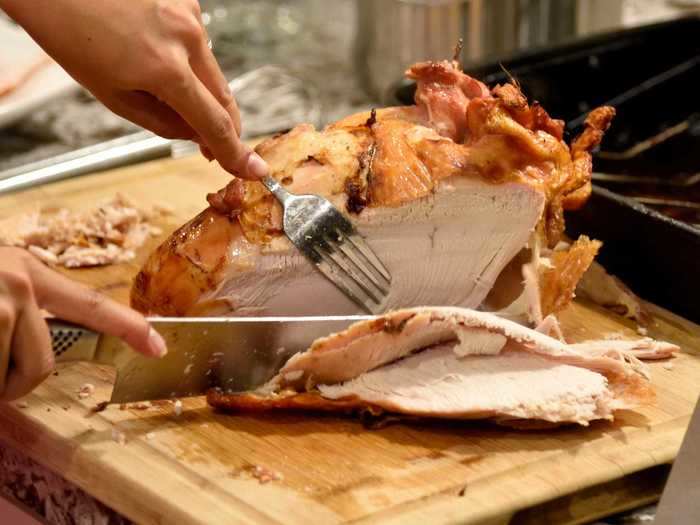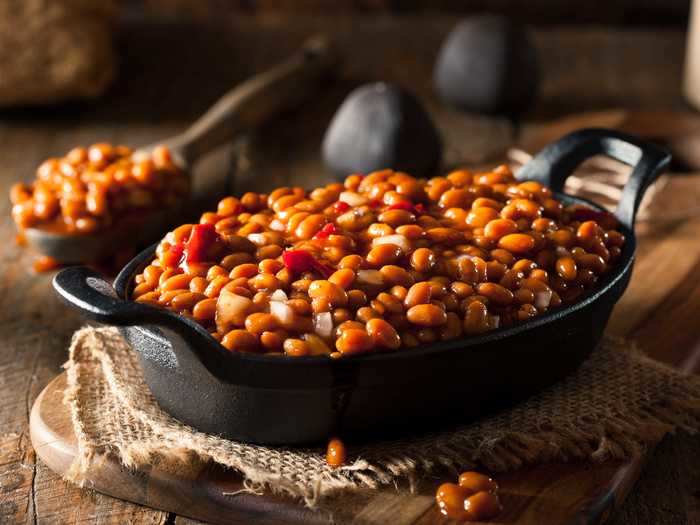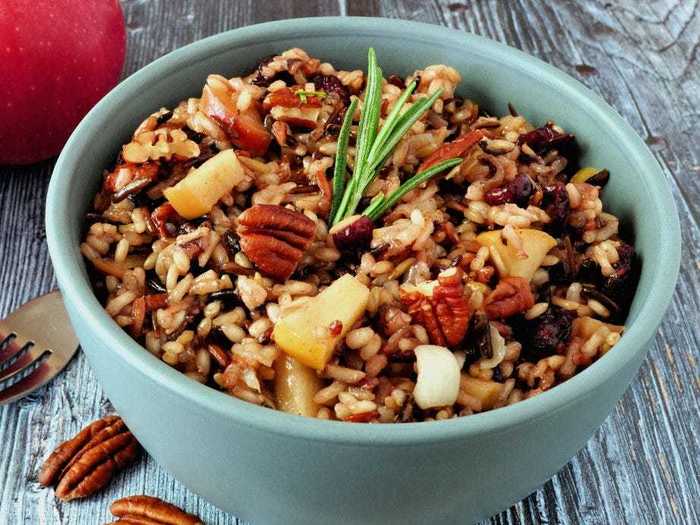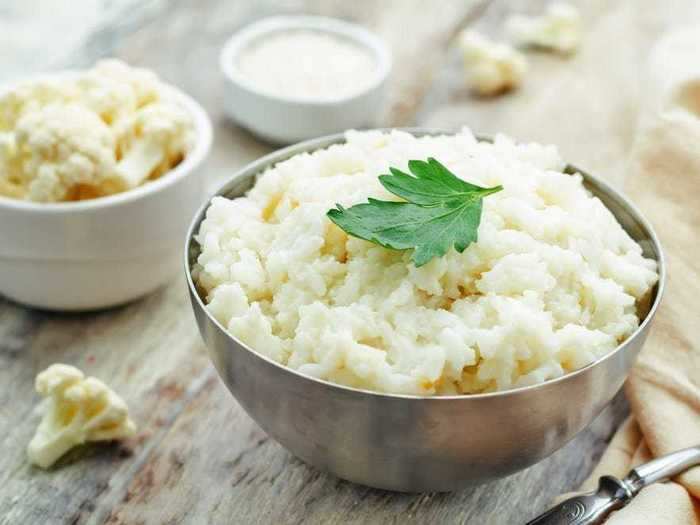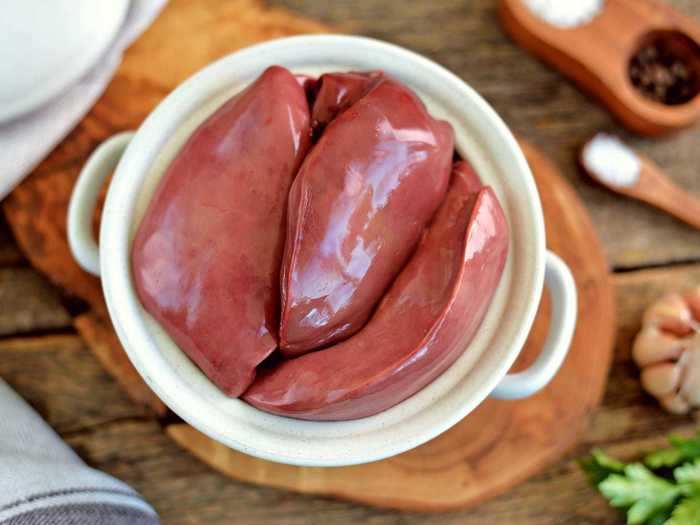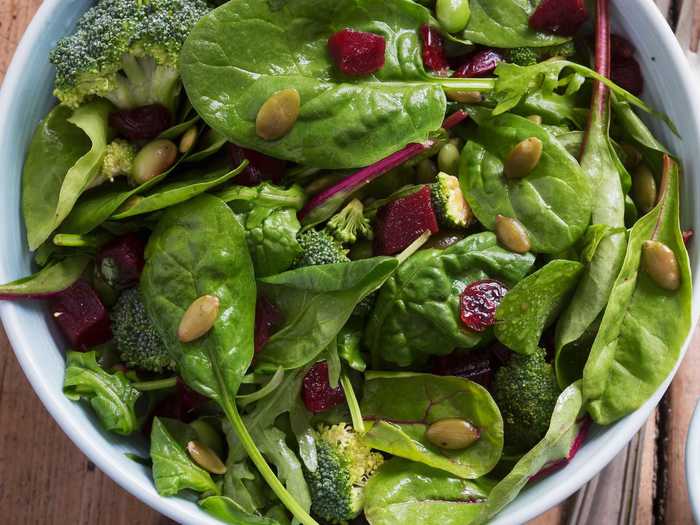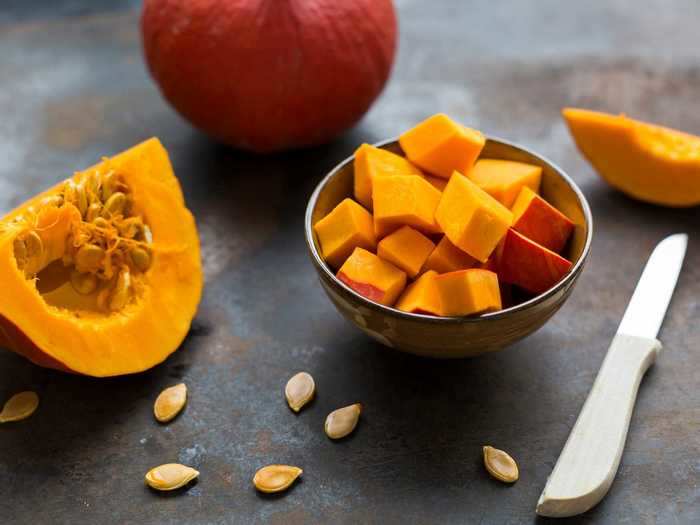Getty Images
- As long as you keep your portions in check, and remember to go light on the sugar, a Thanksgiving dinner can be a relatively wholesome and nutritious affair.
- Thanksgiving staples like cranberries, liver, and beans provide people who eat them with tons of vitamins, minerals, and fiber, and are healthy additions to any holiday meal.
- Here are nine nutritious foods to add to your table Thursday, November 26.
- Visit Insider's homepage for more stories.
- As long as you keep your portions in check, and remember to go light on the sugar, a Thanksgiving dinner can be a relatively wholesome and nutritious affair.
- Thanksgiving staples like cranberries, liver, and beans provide people who eat them with tons of vitamins, minerals, and fiber, and are healthy additions to any holiday meal.
- Here are nine nutritious foods to add to your table Thursday, November 26.
Eating season has arrived, and with it, fears of expanding waistlines, dismissed workout schedules, and plenty of holiday stress.
But contrary to what you might've been told, a Thanksgiving feast can be relatively healthy. Many holiday staples, like beans, squash, and other colorful fruits and vegetables are all healthful fare, as long as you don't overdo it on the portions or add too much sugar.
Here are nine nutrient-packed foods to add to your table this year.
Turkey is an excellent source of protein. Just remember that a single serving should be about the size of a deck of cards.
Richard Theis/EyeEm/Getty Images
Turkey is lower in saturated fat than most other meats (chicken included), and whether you prefer white or dark meat, a single serving will provide you with somewhere around 30 grams of protein.
Contrary to popular belief, there isn't much more tryptophan in turkey than in meats like beef and chicken.
If you're sleepy after the big meal, it's probably just a sign that you ate a lot.
Baked beans are loaded with fiber, which is a great disease-fighter and may even keep our guts healthy.
Shutterstock
Fiber doesn't just keep things moving along in the body.
A decades-long February 2019 study of more than 125,000 Americans found that people who consistently ate a fiber-rich diet were also less likely to develop liver cancer. Other studies suggest fiber-eaters are better at staving off develop Type 2 diabetes and obesity, most likely because fiber keeps the gut microbiome healthy.
Baked beans are also a good source of magnesium, calcium, and iron.
Whole grains like wild rice, quinoa, and barley, as well as nuts, are also great sources of fiber.
Wild rice casserole or stuffing made with pecans, apples, and cranberries.
JeniFoto/ Shutterstock
Cauliflower is fiber-rich as well, and it also provides a dose of vitamin C and folate to keep the immune system functioning properly.
Nataliya Arzamasova/Shutterstock
Another great source of folate is liver.
Tetiana Chudovska / Getty Images
There is also tons of folate in dark leafy greens like spinach and asparagus, mushrooms, and poultry.
Fresh cranberries, like many other raw fruits and veggies, are great for our bodies because they're loaded with phytochemicals that give them their bright colors and flavors.
Cranberry harvesters in Carver, Massachusetts.
John Tlumacki/The Boston Globe via Getty Images
Phytochemicals help our bodies defend us against disease. They reduce inflammation, and also act like ingestible body guards, preventing and repairing DNA damage in the body that can lead to cancer.
Research suggests some of the chemicals in cranberries may even fight off foodborne illnesses like norovirus. Just don't load them up with too much sugar (most canned varieties already have a lot added in).
Stick to fresh cranberries, not the dried kind, for the best nutritional benefits.
"One cup of chopped raw cranberries, for example, contains 14.6 mg of vitamin C per serving, while one cup of dried cranberries contains 0.3 mg," the American Heart Association notes.
Sweet potatoes are a beta-carotene rich addition to any feast.
Gustavo Ramirez / Getty Images
Fresh greens like spinach and kale are vitamin-loaded.
Bartosz Luczak / Getty Images
Kale and spinach are both great salad green options because they're such nutrient-dense foods. Spinach is an excellent source of potassium, iron and vitamin A, while kale has loads of vitamins A, C, and K inside.
Adding cruciferous raw veggies like broccoli and Brussels sprouts to your salad mix may even protect your cells from DNA damage and kill cancer, as they break down into biologically active compounds that, at least in lab animal tests, look promising. Scientists are still determining if these processes work the same way in humans that they do in animals, though.
Finally, pumpkin is one of the most nutrient-packed types of squash you can eat.
Getty Images
A single cup of canned pumpkin provides a grown woman with about 20% of her daily recommended potassium dose.
If you're buying canned pumpkin, just make sure it's pure squash, and not the pie mix that comes with loads of added sugar.
"Add cooked or canned pumpkin to breakfast smoothies, Greek yogurt, or baked goods such as pancakes, muffins, or breads for a nutrition boost," Sue Freck, a registered dietitian at Children's Hospital of Orange County, suggested in a recent blog post.
After you're done feasting, consider getting up for a brief walk, which research suggests is good for digestion.
Matilda Delves / Getty Images
Studies suggest a quick stroll (about 15 minutes after a meal or so) can not only help move food through our guts smoothly, but might actually improve blood sugar levels, perhaps because more glucose is being put to use by our muscles.
Update: This story was originally published in 2019. It has been updated.

